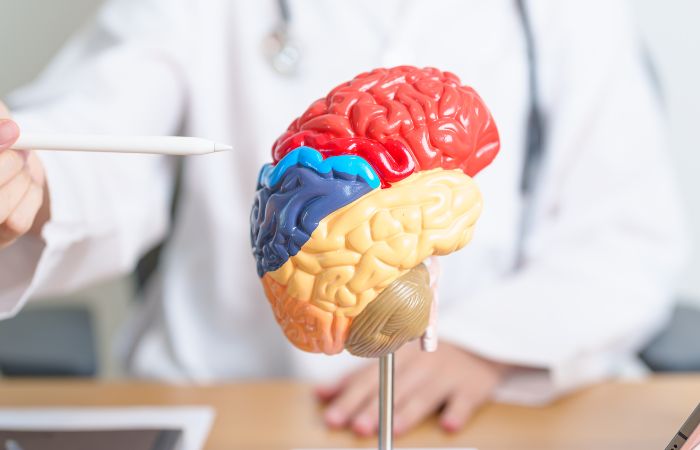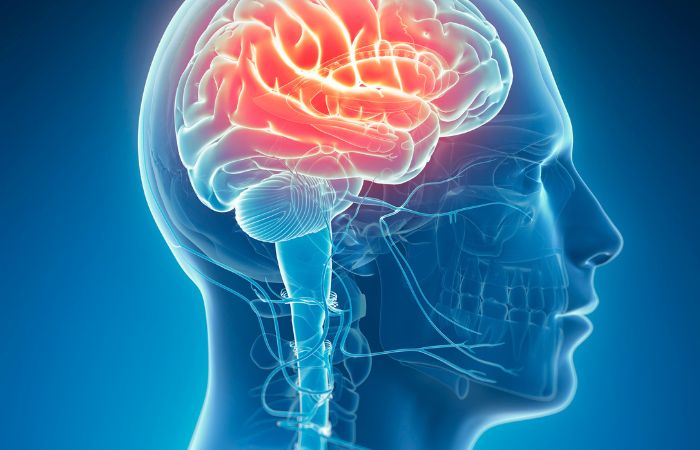
Brain stroke is a medical emergency that can have serious, life-altering consequences if not treated immediately. Understanding the causes, types, and risk factors of brain stroke can help you recognize the signs early, seek timely medical care, and even prevent strokes from occurring. In cities like Mumbai, Pune, Nagpur, Delhi, Ahmednagar, and Bhopal, Diagnopein offers reliable diagnostic services, including brain stroke tests, which can help detect early signs of stroke and monitor recovery.
A brain stroke, also known as a cerebrovascular accident (CVA), occurs when the blood flow to a part of the brain is interrupted, leading to brain cell death. This interruption in blood flow can be caused by a blockage in a blood vessel or by a ruptured blood vessel. Without immediate treatment, a stroke can cause lasting damage to the brain, impairing various bodily functions such as movement, speech, and cognitive abilities.
There are several types of brain stroke, each with different causes and outcomes. Understanding these types is essential for recognizing the symptoms and seeking timely intervention.
Ischemic stroke is the most common type, accounting for about 85% of all strokes. It occurs when a blood clot blocks or narrows an artery that supplies blood to the brain. There are two main causes of ischemic stroke:
A] Thrombosis: A blood clot forms in one of the brain’s arteries, usually due to fatty deposits or plaque buildup (atherosclerosis).
B] Embolism: A blood clot or other debris forms elsewhere in the body and travels to the brain, blocking a brain artery.
Ischemic strokes often lead to significant damage in the affected part of the brain, resulting in physical and neurological impairments.
Hemorrhagic stroke occurs when a blood vessel in the brain bursts, leading to bleeding (hemorrhage) in or around the brain. The bleeding can cause brain cells to die due to lack of oxygen and pressure on the brain. There are two types of hemorrhagic strokes:
A] Intracerebral Hemorrhage: This is the most common type of hemorrhagic stroke and occurs when an artery within the brain bursts, causing bleeding within the brain tissue.
B] Subarachnoid Hemorrhage: This type of stroke involves bleeding in the space between the brain and the thin tissues covering the brain, often caused by the rupture of an aneurysm.
Hemorrhagic strokes are often more severe than ischemic strokes and can lead to severe complications such as coma or death if not treated immediately.
A Transient Ischemic Attack (TIA), often referred to as a mini-stroke, is a temporary blockage of blood flow to the brain. Unlike a full stroke, a TIA does not cause permanent brain damage, but it can serve as a warning sign that a more severe stroke may occur in the future. TIAs often resolve within minutes to hours, but they should be treated as an emergency to prevent a major stroke.
Recognizing brain stroke symptoms quickly can make the difference between life and death. The key to preventing long-term damage is immediate medical attention. The most common brain stroke symptoms include:
A] Sudden numbness or weakness: Often on one side of the body, especially in the face, arm, or leg.
B] Confusion or difficulty speaking: Slurred speech, trouble understanding speech, or confusion.
C] Vision problems: Sudden trouble seeing in one or both eyes.
D] Dizziness or loss of balance: Difficulty walking, dizziness, or a lack of coordination.
E] Severe headache: A sudden, severe headache with no known cause, often associated with hemorrhagic strokes.
If you or someone else experiences these symptoms, it’s crucial to seek medical help immediately. Time is of the essence when it comes to treating brain strokes, and early intervention can improve the chances of recovery.

There are several brain stroke causes, many of which are linked to lifestyle choices and underlying health conditions. Understanding these causes can help you take preventive measures to lower your risk of having a stroke.
High blood pressure (hypertension) is one of the leading causes of both ischemic and hemorrhagic strokes. Chronic high blood pressure puts strain on the arteries, increasing the risk of a blood vessel rupture or clot formation.
Certain heart conditions, such as atrial fibrillation, heart failure, and coronary artery disease, increase the risk of stroke. Atrial fibrillation, in particular, causes the heart to beat irregularly, which can lead to blood clots forming in the heart and traveling to the brain.
Diabetes increases the risk of stroke by contributing to the buildup of fatty deposits in the blood vessels, leading to atherosclerosis. This reduces blood flow to the brain and increases the likelihood of clot formation.
Smoking causes damage to the blood vessels and increases the buildup of plaque, both of which are risk factors for stroke. Smokers are more likely to suffer a stroke compared to non-smokers.
High cholesterol levels can lead to the buildup of fatty deposits in the arteries, narrowing them and increasing the risk of stroke. Maintaining healthy cholesterol levels is crucial in preventing brain stroke.
Being overweight or sedentary increases the likelihood of developing conditions like hypertension, diabetes, and high cholesterol, all of which contribute to stroke risk.
If someone in your family has had a stroke, your risk is higher. Genetic factors can also contribute to conditions such as blood clotting disorders, increasing the likelihood of having a stroke.
In addition to the causes listed above, several risk factors can increase your likelihood of suffering from a stroke:
A] Age: Stroke risk increases with age, especially after 55.
B] Gender: Men have a higher risk of stroke, although women tend to have more severe outcomes.
C] Previous Stroke or TIA: If you’ve had a stroke or TIA before, your risk of having another stroke is higher.
D] Ethnicity: Certain ethnic groups, such as African Americans and Hispanics, have a higher risk of stroke.
Brain stroke treatment depends on the type of stroke and the severity of the symptoms. Immediate medical intervention is critical to reduce brain damage and improve outcomes.
For ischemic strokes, the goal is to restore blood flow to the brain. This can be achieved with clot-busting drugs, such as tissue plasminogen activator (tPA), which are most effective when administered within 3 hours of symptom onset. In some cases, doctors may perform a procedure called thrombectomy to physically remove the clot from the brain’s arteries.
For hemorrhagic strokes, the focus is on controlling the bleeding and reducing pressure on the brain. This may involve surgery to repair ruptured blood vessels or relieve brain pressure, as well as medications to control blood pressure and prevent further bleeding.
Rehabilitation plays a significant role in recovery after a stroke. Depending on the severity, stroke survivors may need physical therapy, occupational therapy, and speech therapy to regain lost functions. Early intervention and rehabilitation can improve long-term outcomes.
Brain stroke tests are essential for diagnosing stroke and determining the type and extent of brain damage. Common tests include:
1] CT Scan or MRI: These imaging tests are used to visualize the brain and identify areas affected by stroke, such as blood clots or bleeding.
2] Brain Stroke Blood Tests: These tests check for blood clotting disorders, infection, or other abnormalities that may have contributed to the stroke.
3] Electrocardiogram (ECG): This test is used to check for heart-related causes of stroke, such as atrial fibrillation.
If you’re in cities like Mumbai, Pune, Nagpur, Delhi, Ahmednagar, or Bhopal, you can access reliable brain stroke tests at Diagnopein. They offer convenient at-home blood collection and diagnostic services to ensure you get the care you need quickly and efficiently.